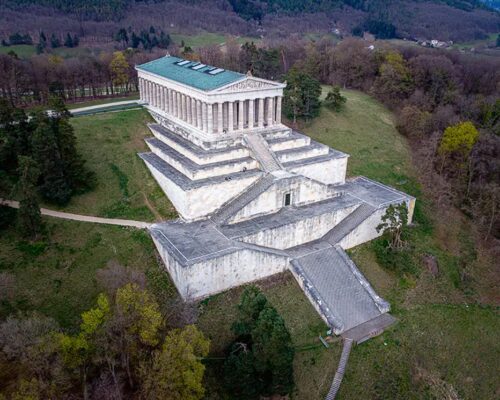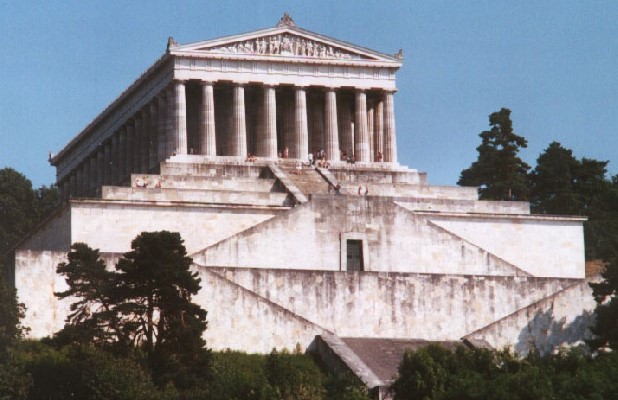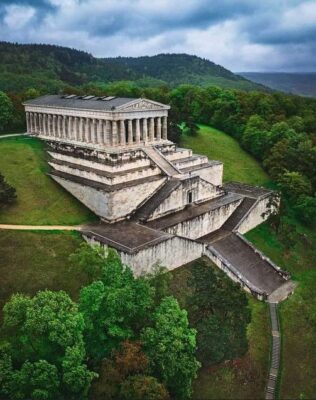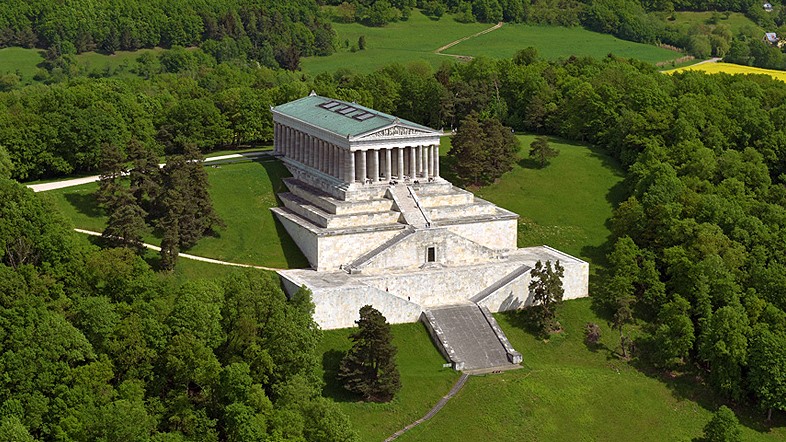Walhalla, located in Bavaria, Germany, is a breathtaking tribute to classical architecture, modeled after the iconic Parthenon of Athens. This monument not only celebrates ancient Greek culture but also reflects the vision of King Ludwig I of Bavaria and the remarkable architectural talent of Leo von Klenze.

1. The Origins of Walhalla
1.1. A Name Rooted in Norse Mythology
The name “Walhalla” comes from Norse mythology, symbolizing a hall of heroes. It signifies the monument’s purpose as a place of honor for influential figures in German history.
1.2. Commissioned by King Ludwig I of Bavaria
King Ludwig I, a passionate admirer of Greek culture and a devoted philhellenist, envisioned Walhalla as a grand project to celebrate both his love for antiquity and his nation’s heritage.
1.3. Designed by Leo von Klenze
The renowned architect Leo von Klenze, who also contributed to the classical redesign of Athens, was tasked with creating Walhalla. His design closely mirrors the Parthenon, blending historical reverence with architectural grandeur.

2. Architectural Features of Walhalla
2.1. A Replica of the Parthenon
Walhalla’s design replicates the Parthenon’s grandeur, featuring imposing Doric columns and meticulous attention to classical proportions. Its resemblance to the ancient structure is both striking and deliberate.
2.2. A Hall of Heroes
Inside Walhalla, marble busts and plaques honor over 200 German-speaking figures, including scientists, artists, and leaders, reflecting its purpose as a hall of fame for Germany’s great minds.
2.3. Timeless Craftsmanship
Constructed from pristine white marble, Walhalla exudes elegance and durability. Its craftsmanship, much like the Parthenon, symbolizes the timelessness of classical architecture.

3. Walhalla’s Cultural and Historical Impact
3.1. A Philhellenic Vision
Walhalla embodies King Ludwig I’s deep admiration for Greek antiquity, making it a cultural bridge between ancient Greece and 19th-century Bavaria.
3.2. A Tribute to German Heritage
The monument is not just an architectural marvel but also a cultural landmark that honors the contributions of Germany’s historical figures to world heritage.
3.3. A Must-Visit Destination
Today, Walhalla remains a popular tourist attraction, offering breathtaking views of the Danube River and a unique opportunity to connect with history and architecture.
See more: The Mysterious and Abandoned Porto Flavia: A Forgotten Piece of Engineering History
Conclusion
Walhalla stands as a magnificent homage to classical architecture and cultural reverence. Inspired by the Parthenon, this masterpiece reflects the vision of King Ludwig I and the talent of Leo von Klenze. Whether you’re a history enthusiast or an architecture lover, Walhalla offers a journey through time and a celebration of timeless beauty. Don’t miss the chance to experience this iconic monument!


CÁC TIN KHÁC
Mark Twain & Olivia Langdon: A 36-Year Love Story Filled with Laughter and Devotion
The Tollund Man: A 2,400-Year-Old Mystery Preserved in a Danish Bog
Skara Brae: Scotland’s Hidden Neolithic Village
Porta Nigra: The Hidden Depths of Trier’s Iconic Roman Gate